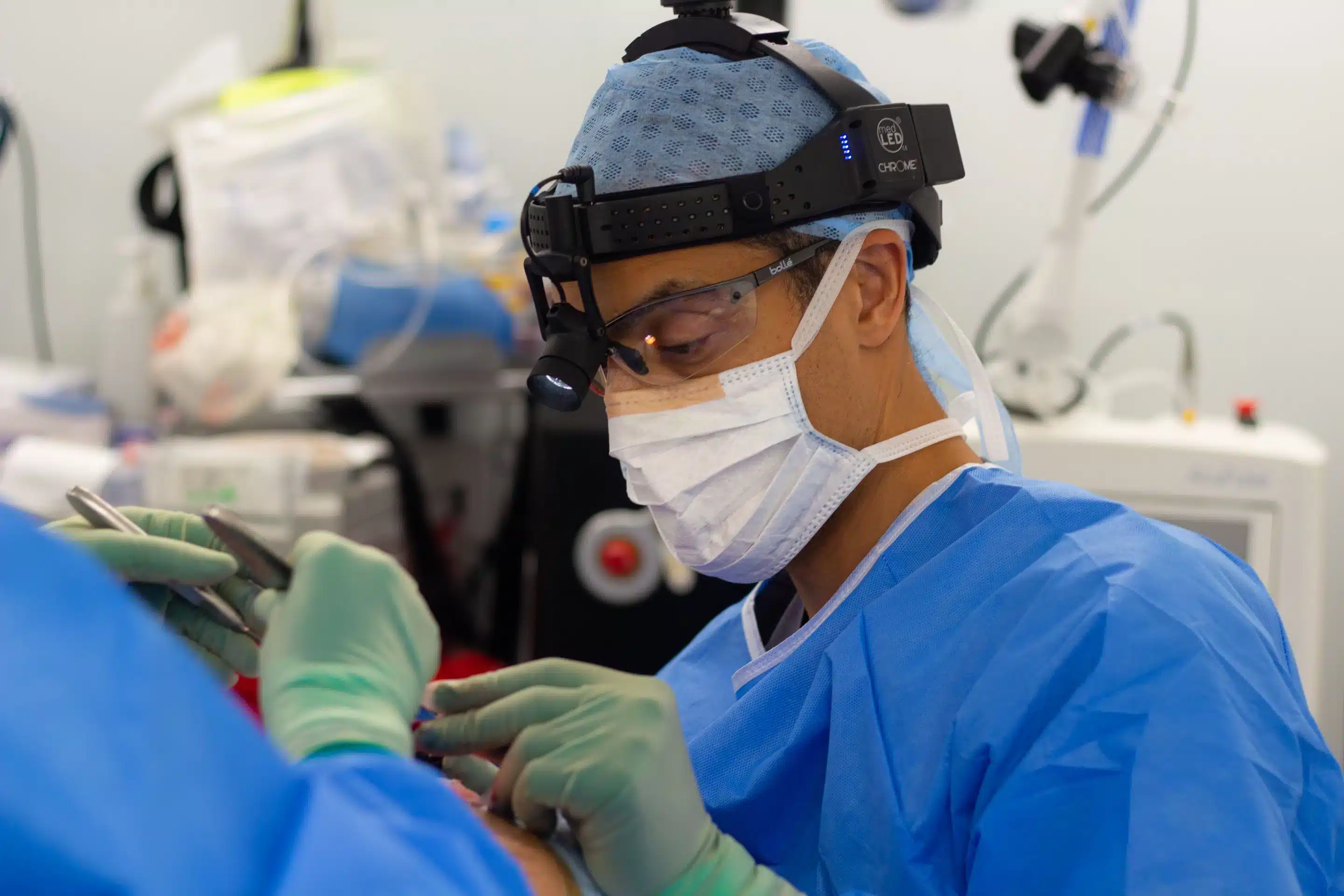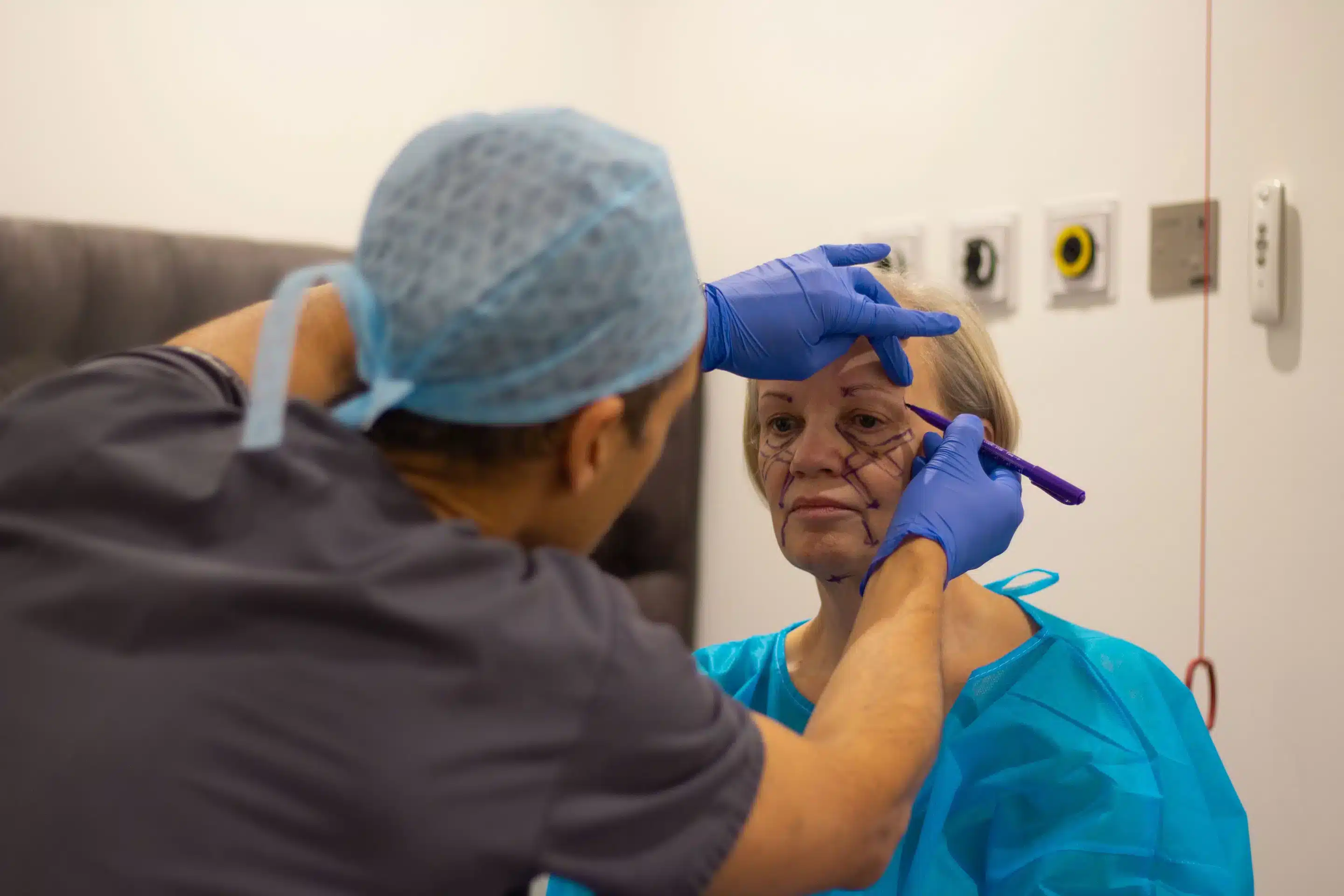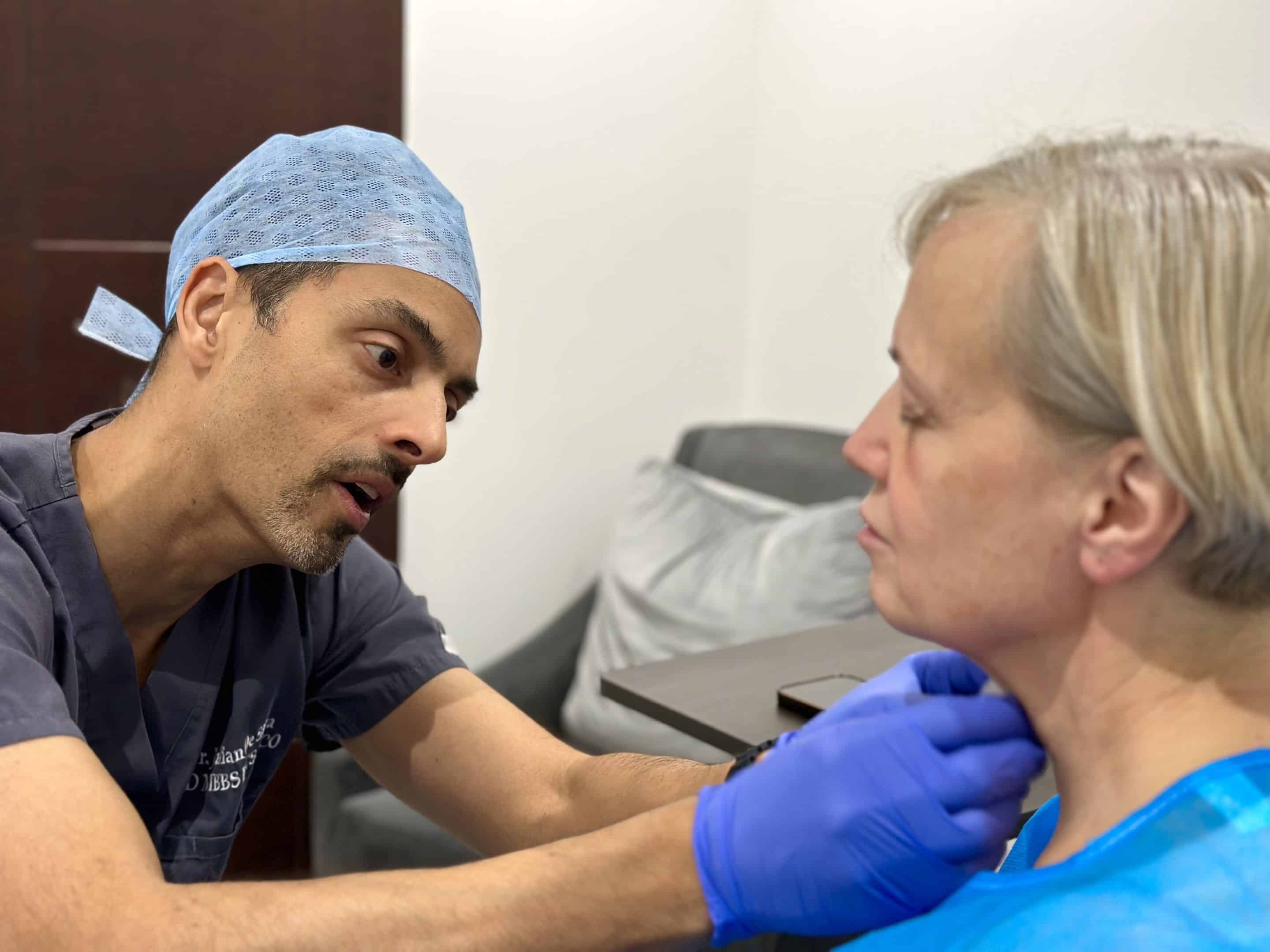Many of our patients’ are unhappy with their noses and are looking for an easy way to enhance their appearance. With Valentine’s day coming up, it’s common for patients’ come to see us, to want to improve their appearance for this special occasion. Rhinoplasty is one of the most performed cosmetic treatments and non-invasive nose fillers are gaining in popularity. It seems like you can get fillers easily nowadays in a beauty salon or spa in London. However, how safe are nose fillers? What should you be aware of in order to make an informed decision? More and more patients are coming to see us as a specialist in facial cosmetic surgery to dissolve fillers that have not been completed correctly.
Dr Julian De Silva is a well respected facial cosmetic and plastic surgeon on Harley Street in London, UK. We frequently dissolve filler of patients who have had inappropriate filler which has made their nose too large. Many people are not aware of the dangers of nose fillers. While nose fillers can provide beautiful, natural results, the chances of a successful treatment greatly improve if the treatment is performed in a professional environment by an experienced specialist, with knowledge of the underlying anatomy and artistic flair.
The dangers of nose fillers
In the last couple of years, people have become more aware of lip fillers that have gone bad. Fillers can be a safe, minimally invasive treatment to add facial volume and enhance your natural beauty. However, they are not without risk. For example, the potential dangers of nose fillers are necrosis (tissue death), permanent scarring, and damage to vision including blindness. You should always look for a highly trained, experienced doctor to get the safe results you are looking for.
How can a nose filler go bad?
To administer injectables and fillers is precision work. It must be done in a clinical environment and with the highest amount of training and experience. When the filler is not administered at the right depth it may be injected into a blood vessel or a muscle, risking blindness and necrosis. The correct knowledge about human anatomy is therefore essential for proper injection and limited risks. This is something that a skilled cosmetic surgeon is trained in, but a beautician in a London beauty salon may not know. Adequate clinician training in the use of fillers is essential for the prevention of adverse events.
How can I get safe nose fillers in London, UK?
Please see a doctor who is skilled in facial cosmetic surgery, experienced in noses, they will be best suited to understand the relevant anatomy, as well as give you a result that lies in proportion to the rest of your face.
There are several ways to safely improve the appearance of your nose. You can choose to have nose surgery, also called rhinoplasty or you can choose a non-surgical nose job with dermal fillers, also called a liquid nose job. To speed up the recovery and reduce the risk of complications, a sterile environment is essential. Dr Julian De Silva performs both surgical and non-surgical nose jobs in his professional clinic on Harley Street, in London. The dermal fillers are carefully placed to specific points in the nose and last about 12-18 months. For a personal consultation about your specific situation, schedule an appointment at our Harley Street office today.
Fillers: How Much Is Too Much

In this section, we’ll explore how much is too much in terms of facial fillers.
Dark circles under the eyes, deep “smile lines,” droopy nose, and sunken cheeks are some of the most apparent signs of ageing that appear on the face as we get older. However, in recent years, technological advancements in the cosmetic field have allowed millions of Americans every year to flock to cosmetic surgeons in order to turn back time and restore their youthfulness.
According to the American Society of Plastic Surgeons (ASPS), a total of 15.6 million cosmetic procedures, both surgical and non-surgical, were performed last year. A large percentage of these procedures included the use of injectable fillers.
Fillers are substances that can be injected directly through the skin using a syringe. They are very versatile and can be used for various purposes. Some common uses include fixing scars, filling up wrinkles and creases, enhancing cheeks and lips structure, and improving the contours of the face.
Two of the most common types of fillers include hyaluronic acid (used in Restylane and Juvéderm) and purified botulinum toxin A (used in Botox and Dysport).
- Restylane: This filler is most effective for increasing the plumpness of the face and bringing more volume to the skin. Deep wrinkles and skin folds can be easily reduced by Restylane fillers. On average, this filler will maintain its effects for six months and may even last for up to nine months.
- Juvéderm: Another popular choice of filler is Juvéderm. This works great for lip augmentation, reducing lines around the lips, treating acne scars, and minimising “smile lines.” If done properly, Juvéderm should last for six months.
- Voluma: A newer generation of filler that has the advantage of a cross-linking structure, this enables the filler to last for considerably longer, one year or more. This filler works well for volume augmentation in specific parts of the face.
- Botox: As the most well-known filler available for cosmetic procedures, Botox is the ideal choice for you if you are looking to get rid of crow’s feet, wrinkles on the forehead, frown lines, or to treat muscular spasms on the face. Typically, Botox will maintain its results anywhere from three to four months.
- Dysport: Dysport is a relatively new filler that is very similar to Botox. It relaxes muscles that cause wrinkles on the face. Thus, it is a good option for treating wrinkles around the eyes, lips, and forehead. When compared to Botox, Dysport is less expensive, as well.
Regardless of which injectable filler you use, inserting too much filler or improper treatment can cause severe side effects, such as malformed and irregular features, excess swelling and bruises, or weakened muscles. Therefore, it is crucial that you only have an experienced surgeon perform the procedures to ensure your safety and to achieve impeccable results.
Some of the fillers, like Botox, have been used by doctors for more than a decade. And many of them are approved by the Food and Drug Administration (FDA). These are all strong proof that these things work well and can genuinely give you a more attractive overall look.
Dr. De Silva is proficient in the use of fillers and specialises in facial cosmetic and plastic surgeries. Unlike other surgeons who work on various parts of the body (and sometimes fail to produce desired results), Dr. De Silva’s exclusive focus on facial surgeries has enabled him to become exceptionally innovative and highly experienced in his work. Moreover, he goes above and beyond his work to show extra care and concern for his patients.
To him, his patients will always come first. This is evident from his philosophy because he chooses to only perform facial procedures when he is certain that he can make a positive difference in his patient’s life. He will not conduct any procedure if he deems it to be harmful to his patients. So, when you visit Dr. De Silva, you can rest assured you are in safe hands!
Cheek Implants or Fillers

In this section, we’ll explore cheek augmentation with fillers.
Just like many other parts of the human body, the cheeks also begin to sag as we grow old. This happens because the skin on our cheeks loses volume and elasticity over time. External factors like smoking and prolonged exposure to sunlight can also contribute to saggy and sunken cheeks. If you are someone who is suffering from this, then there is good news for you. Today, with the help of cheek implants and cheek fillers, surgeons can bring back the “fullness” of your cheeks and restore your youthful appearance.
Below, you will find some advantages and disadvantages of cheek implants as well as learn how they are inserted.
Surgical: A disadvantage of cheek implants is that they require surgery. Incisions are either made on the natural folds of the lower eyelids or inside the mouth to minimise visible scars.
Procedure: Before the implants are placed, you will be put under with sedation anaesthesia. Then, incisions are made and the implant is inserted through the opening.
In most cases, the surgery can be performed in less than an hour and the results can be seen right away.
Recovery: Like many other plastic surgeries, cheek implants also leave swelling on the face and numbness can be felt by the patient for a few days afterward. Normal recovery can take up to six weeks although the very final result is after 6-months.
Results: Because cheek implants are permanent, they can stay in place forever and do not require you to spend money to have them replaced. Dr. De Silva will choose an implant that best suits your individual needs this includes your expectations from the surgery, your facial shape and size, your age, and the natural shape of your underlying cheekbones. Cheek implants produce better results than fillers if you want to have more prominent and sculpted cheekbones.
Now, let’s examine how cheek fillers work and what are some positive and negative qualities of them.
Non-Surgical: One of the biggest advantages of fillers over implants is that fillers do not require surgery. Instead of using incisions, the surgeon will only use syringes to inject fillers into the cheek. Moreover, since there is no surgery, this means there are very few complications in performing this procedure.
Procedure: Your surgeon will measure the contours of your face before injecting the fillers in order to make sure the desired results are achieved. The patient will not be sedated and will be fully awake throughout the 30-minute procedure.
Recovery: Because of the use of syringes, some small bruises can be seen after the procedure. However, they are almost unnoticeable. Total recovery time for fillers can be anywhere from three days to ten days.
Results: One major downside of injectable fillers is that the results are not permanent. Thus, they need to be re-injected every six to twelve months in order to maintain the plumpness of the cheeks. In the long run, this can be expensive.
Generally, someone who has a lack of proper structure of the cheekbones would be an ideal patient for cheek implants as they are superior when it comes to improving cheekbones’ appearance. On the other hand, a person looking for very minor changes to the cheek area should consider getting cheek fillers.
Whether you need implants or fillers, it is recommended that you consult your doctor before making a decision. You are welcome to schedule an appointment with Dr. Julian De Silva to go over your needs.



